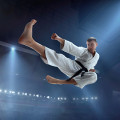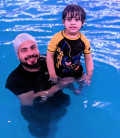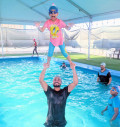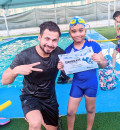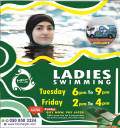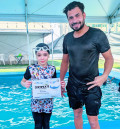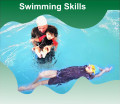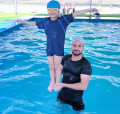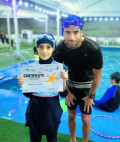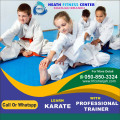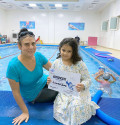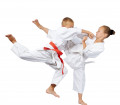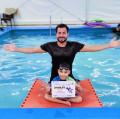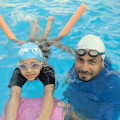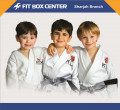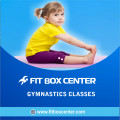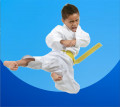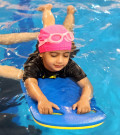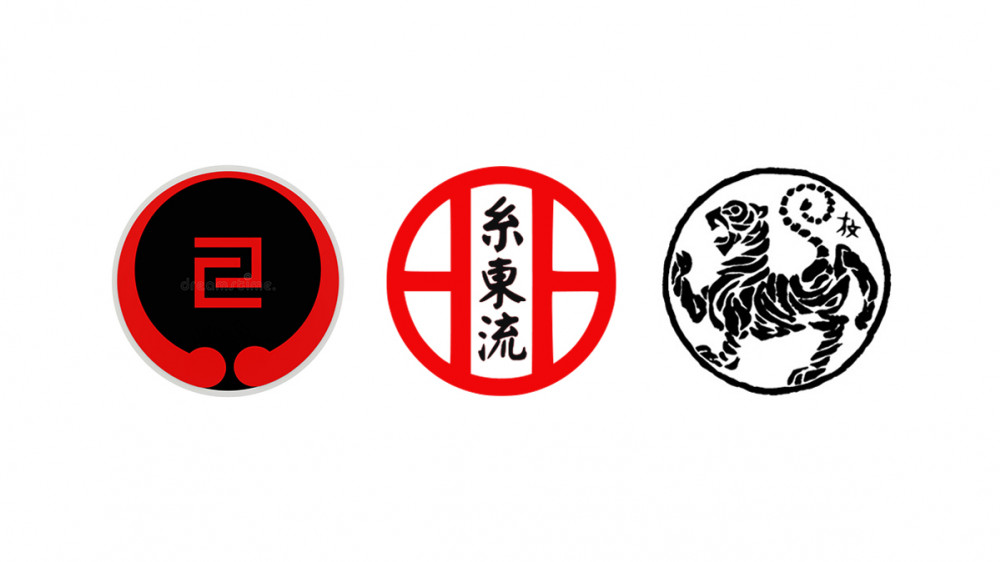
Karate In Its Various Forms
2023-01-07 - Martial Arts, Karate
Karate, a martial art form, is characterized by striking techniques such as punches, kicks, knee strikes, and elbow strikes, as well as open-handed techniques such as knife-hands and spear-hands. The practice of karate also includes the study of kata, which are pre-arranged forms that simulate self-defense situations, and sparring, which is the practice of techniques against an opponent. The goal of karate practice is the development of a strong mind and body, as well as the cultivation of a peaceful and humble spirit.
There are many different styles of karate, but Shotokan, Goju-ryu, and Shito-ryu are among the most widely practiced.
Shotokan: Developed by Gichin Funakoshi, Shotokan is characterized by its deep, powerful stances, linear techniques, and an emphasis on strength and speed. It is considered one of the most popular and widely practiced styles of karate in the world.
Goju-ryu: Developed by Chojun Miyagi, Goju-ryu is known for its circular movements and softer, more fluid techniques. It places a strong emphasis on breathing and the use of both hard and soft techniques.
Shito-ryu: Developed by Kenwa Mabuni, Shito-ryu combines elements of both Shotokan and Goju-ryu, with a focus on fluid, natural movements and the use of various types of strikes and kicks.
Each of these styles have their own unique characteristics and lineage, and all of them have been further developed and expanded by their respective successors and practitioners. However, all of them share some fundamental techniques and principles of karate.
Shotokan
Shotokan is a style of karate that was developed by Gichin Funakoshi in the early 20th century. It is characterized by deep, wide stances and powerful, linear techniques. It is one of the most widely practiced styles of karate in the world.
Gichin Funakoshi (1868-1957) is considered the "father of modern karate." He was a master of the Okinawan martial art of Shuri-te and is credited with popularizing and promoting the practice of karate in Japan. He was born in Shuri, Okinawa, and began studying karate at a young age under Anko Itosu and Yasutsune Azato. In 1922, he was invited to give a demonstration of karate in Japan, and it was there that he decided to stay and promote the art. Funakoshi spent the rest of his life teaching and promoting karate in Japan. He changed the names of many of the traditional karate techniques to make them easier for Japanese speakers to pronounce, and he also developed a new system of ranking for karate practitioners. He also wrote many books about karate, including "Karate-Do Kyohan," which is considered a classic text on the subject. Funakoshi's teaching method is characterized by the use of deep, wide stances and powerful, linear techniques which known as Shotokan, named after his pen-name Shoto, that is one of the most widely practiced style of karate.
Shotokan karate training typically includes a focus on basic techniques such as strikes, kicks, blocks, and forms (kata),as well as sparring (kumite) and physical conditioning. Training in Shotokan karate emphasizes developing strong stances, powerful strikes, and sharp, clear movements. It also emphasizes the development of a strong spirit and personal discipline. Shotokan is one of the major style of Karate which have different branches of its own like JKA(Japan Karate Association) , SKIF ( Shotokan Karate International Federation) and many others, practiced around the world, both in traditional dojos and in sport clubs. As well as in many national and international competitions.
Goju-ryu
Goju-ryu is a style of karate that was developed by Chojun Miyagi in the early 20th century. It is characterized by the use of both hard and soft techniques, as well as circular movements.
Chojun Miyagi (1888-1953) was an Okinawan martial artist who is considered the founder of Goju-ryu Karate. He was born in Naha, Okinawa, and began studying karate at a young age under Kanryo Higaonna. He then travelled to China where he spend several years learning and practicing martial arts. After returning to Okinawa, Miyagi developed Goju-ryu karate, which he based on the principles of "hard-soft" (go-ju) and the use of both circular and linear movements. Miyagi's Goju-ryu karate emphasizes the use of both hard and soft techniques, as well as circular movements, and it also includes techniques such as throws, joint locks, and pressure points. He was known for his kata and specialized techniques such as the "Sanchin Kata" which is considered the core kata of the Goju-ryu system. Miyagi devoted his entire life to the development and promotion of Goju-ryu karate, and his legacy continues to be felt today through the many Goju-ryu karate schools that exist around the world. His emphasis on the integration of hard and soft techniques, as well as the use of circular movements, make Goju-ryu karate a well-rounded and versatile martial art.
The name "Goju-ryu" is Japanese for "hard-soft style," which refers to the use of both hard striking techniques (such as kicks and punches) and soft grappling techniques (such as joint locks and throws) in the art. The style is also known for the use of circular movements, which are believed to increase the fluidity and power of techniques. Goju-ryu training typically includes a focus on basic techniques such as strikes, kicks, blocks, and forms (kata),as well as sparring (kumite) and physical conditioning. The art also includes the use of traditional weapons such as the bo staff and sai, and advanced students may also study more advanced techniques such as pressure points and advanced kata. The Goju-ryu style is also a very effective self-defense style, as it emphasizes on close-range fighting and the use of natural body movement and power. It teaches students to control their breathing, how to generate power from their core, how to maintain balance and stability, and how to use the whole body in techniques. Goju-ryu karate is practiced around the world and is considered a well-rounded and versatile martial art. It is a one of the most known styles of karate and have different branches like the JKF(Japan Karate Federation Goju-ryu ) and others which offer different lineages and training methodology.
Shito-ryu
Shito-ryu is a style of karate that was developed by Kenwa Mabuni in the early 20th century. It is a combination of Shuri-te and Naha-te styles and characterized by the use of a wide range of techniques, including both hard and soft strikes, kicks, joint locks, and throws. It is considered to be one of the most comprehensive styles of karate.
Kenwa Mabuni (1889-1952) was an Okinawan martial artist who is considered the founder of Shito-ryu karate. He was born in Shuri, Okinawa, and began studying karate at a young age under both Anko Itosu and Kanryo Higaonna. He also trained with Choshin Chibana and other karate masters. Mabuni was fascinated by the different styles of karate and was determined to create a style that incorporated the best elements of all of them. He called this style Shito-ryu which means "Hall of the spirit and the hand" , which is a combination of the Shuri-te and Naha-te styles. He created this style by integrating various karate styles and techniques he had learned, including both hard and soft strikes, kicks, joint locks, and throws.
Shito-ryu training typically includes a focus on basic techniques such as strikes, kicks, blocks, and forms (kata),as well as sparring (kumite) and physical conditioning. The art also includes the use of traditional weapons such as the bo staff and nunchaku, and advanced students may also study more advanced techniques such as pressure points and advanced kata.
Shito-ryu is considered to be one of the most comprehensive styles of karate, as it encompasses a wide range of techniques from different styles and systems. It is known for its versatility, with a balance of traditional and modern approaches. Kenwa Mabuni devoted his life to the development of Shito-ryu, and his legacy continues to be felt today through the many Shito-ryu karate schools that exist around the world. The name "Shito-ryu" is derived from the first characters of the names of two of Mabuni's primary teachers, Anko Itosu and Kanryo Higaonna. It is also said to be the "Hall of the spirit and the hand". Shito-ryu training typically includes a focus on basic techniques such as strikes, kicks, blocks, and forms (kata),as well as sparring (kumite) and physical conditioning. The art also includes the use of traditional weapons such as the bo staff and nunchaku, and advanced students may also study more advanced techniques such as pressure points and advanced kata. One of the key features of the Shito-ryu style is the emphasis on fluidity and natural body movement, with a strong focus on the integration of traditional and modern techniques. It is known for its versatility, with a balance of traditional and modern approaches. The style has various branches like IKSKA (International Shito-ryu Karate-Do Association) and other organization which offer different lineages and training methodology.
.







.jpg)





